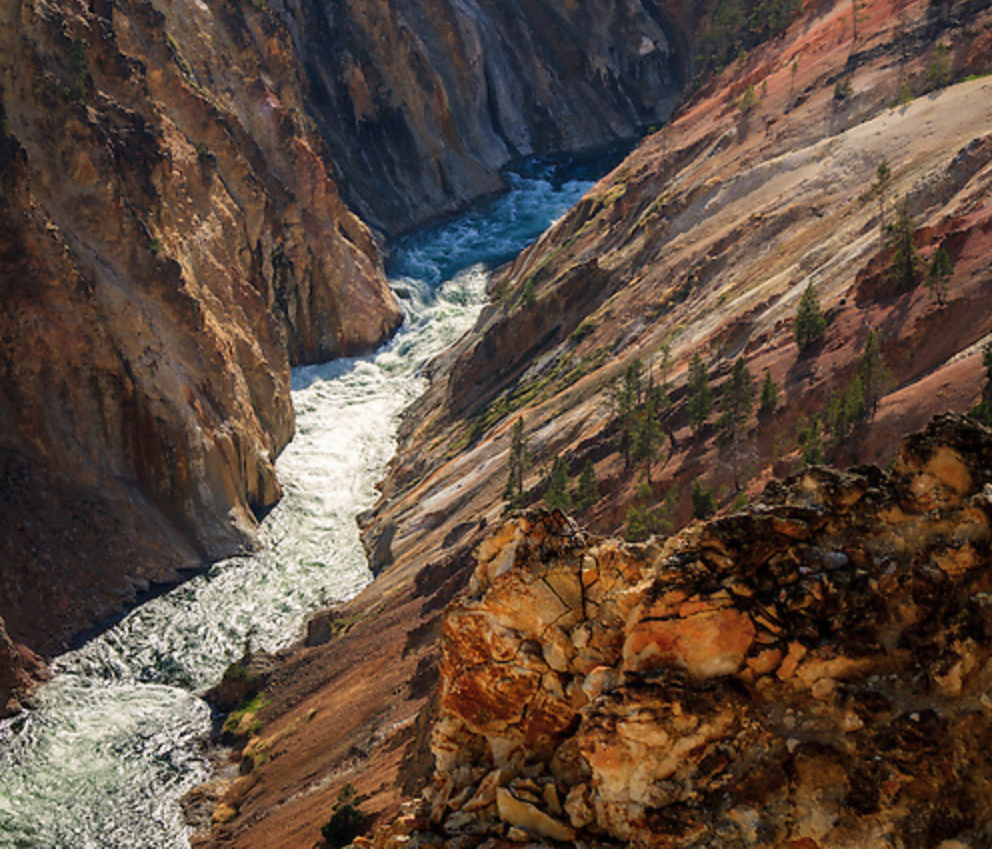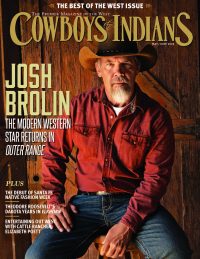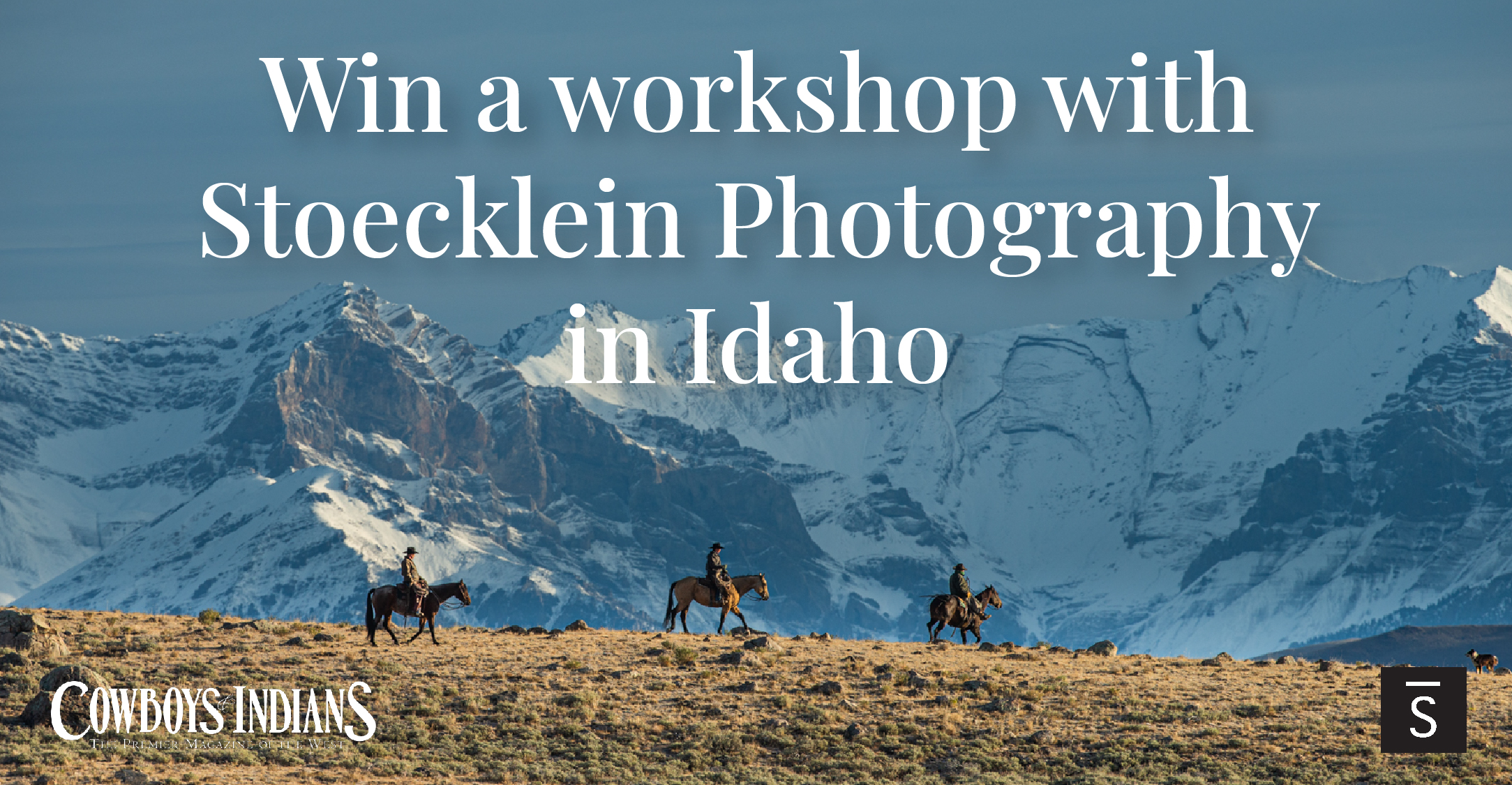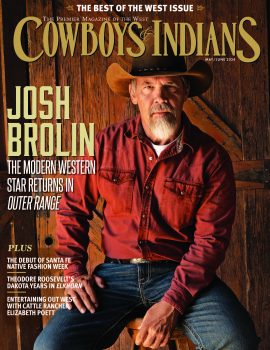Yellowstone National Park is a gnarly, potentially deadly place, and the contrast between the rugged natural beauty and the stark reality of its wild perils only adds to the awesome grandeur.
Gazing out at the Grand Canyon of the Yellowstone, I couldn’t help but think of the relative eternity it’s been channeled into the landscape and the perpetuity into which it will remain long after I am gone, even after the human race has ceased. The feeling was amplified by the awareness I could meet that eternity in a matter of seconds by leaning too far over the guardrail.
I had a single late-September day to visit Yellowstone National Park. One day, of course, would barely scratch the surface. You could spend a single day posting up at two or three different viewing areas with binoculars waiting to spot elk, grizzlies, or, if you’re fortunate enough, wolves, and go home perfectly content without having seen Sunset Lake, Emerald Pool, Tower Fall, Mammoth Hot Springs, or the most famous (and, for me, most underwhelming) park attraction, Old Faithful. But one day was what I had.
Rod Tripp, a guide from Grub Steak Expeditions, picked me up at my hotel in Cody, Wyoming, before daybreak and promised to ensure I maximized the precious hours of daylight I had in the natural playground. The tour began before we reached the park, as he pointed out interesting features of the arid landscape wheeling past. We were barely through the East Entrance gate when he spotted a pair of coyotes padding through the snow. I was too enthralled by the massive shaggy bison trudging past to notice them at first.
There are countless ways Yellowstone could kill you, from the bison that clop along next to your vehicle almost as soon as you pay the entrance fee to the supervolcano beneath the park that theoretically could destroy you — and much of North America — before you ever visit or decades after you leave.
Grizzly bear attacks, though uncommon, are not unheard of. Dramatic views from various cliffs and gorgeous overlooks could turn fatal with a misstep. The park is full of streams, rivers, and lakes, and, as with any body of water that attracts recreational users, drowning is always a risk. Even if you’re a strong swimmer, at Yellowstone there is the added possibility that geothermal heat could scald you to death. On the other end of the thermometer, Yellowstone Lake’s frigid waters can cause hypothermia any time of year.
That’s not to mention the possibility of wandering off a trail and disappearing into the vast, indifferent wilderness, lost to cold, dehydration, starvation, or hemlock. Of course, most of these mishaps are avoidable with a little knowledge and common sense, or a guide who possesses those gifts. The most dangerous part of your Yellowstone trip will probably be your car ride there.
My guide (provided by the Park County Travel Council) seemed an endless source of knowledge with a tracker’s intuition for finding the animals we wanted to see. I say we because it was clear that even after decades of working in the rangelands of California and then Wyoming, Tripp was just as enthused as I was — probably more, really — by the sight of elk, a pair of coyotes, and a grizzly cow and cub.
Animals weren’t Tripp’s only area of expertise. At Old Faithful, he explained how the popular perception that you could set your watch by its spouts was exaggerated thanks to tectonic shifts that changed its timing over the years. He gave a heads-up that its hundred-something-foot spurt would probably not look especially dramatic that day, as it would be undefined against the gray-clouded sky and cloaked in steam lingering in the cold air. He was right. The column of superheated water gradually climbed higher and higher into the air, hissing and spitting, but I wasn’t even sure exactly when the eruption began or ended. I was more impressed by the log-and-limb architecture and gigantic stone fireplace at the nearby Old Faithful Inn where we ate lunch.
At the Fishing Cone, a hot spring in the West Thumb Geyser Basin on Yellowstone Lake, Tripp told me the legend that fishermen discovered they could cook their fish without even taking it off the hook, boiling it right in the pool beside the lake. It’s just one of many facets of the park that sound so incredible that early Anglo explorers’ and trappers’ reports about the place were dismissed as delirium or tall tales. Tripp added that he had a friend who once tried the hot spring cooking method — which, by the way, is now against park regulations. It made the fish taste like sulfur.
In Midway Geyser Basin, we visited Grand Prismatic Spring, a beautiful aqua-blue disk of steaming water surrounded by concentric rings of green, yellow, brown, and orange with branches of rusty mud trickling off. It looked like it belonged on another planet. The various colors were created by different thermophytes, microscopic organisms that live on various elements found in hot springs. Iron adds a reddish hue to the outer rings, yellow comes from sulfur, green and blue from plant forms that use photosynthesis. Stepping off the basin’s boardwalks, he warned me, could be fatal. What looked like burbling pools of wet cement were cauldrons of boiling mud as acidic as battery acid. Your corpse would dissolve. There would be no body to recover.
I didn’t want to leave the park, but that would be a hellish way to stay for the rest of time.
We were closing the loop of our route back to the East Entrance when Tripp spotted a splash of red on the snow a few hundred yards away. Through binoculars, it proved to be a freshly killed elk, the carcass torn open with ribs protruding but plenty of meat left. I hadn’t noticed the scavenger birds in the air, but Tripp had and drove us right to the site, knowing we had a chance to see a predator return to its prey. Perhaps a bear would amble back over for a second helping. What we really hoped to see, though, was one of the park’s 150 or so wolves.
We waited awhile but no other animals showed up. I wouldn’t call our stakeout a bust, though. There was something meditative about it. For a few minutes, everything else disappeared. Stressors from work, home, and the news cycle vanished. We stood still under the colorless sky, breathing in needles of cool air among the lodgepole pines, passing binocs back and forth, just watching a dead animal and waiting for something to happen.

Visit nps.gov/yell for Yellowstone National Park info or tourtoyellowstone.com for Grub Steak Expeditions. Photography: Clint Losee.
From the July 2018 issue.
More Travel
Courses Of The West: Hit The Links
Let's Toast The San Antonio Tricentennial
Spas Of The West: Let The Healing Begin













